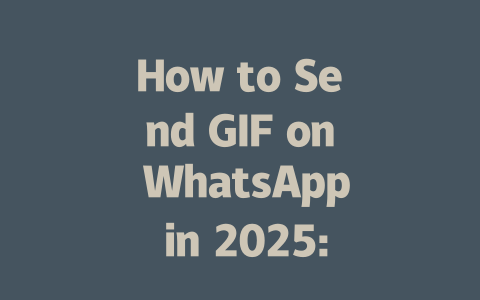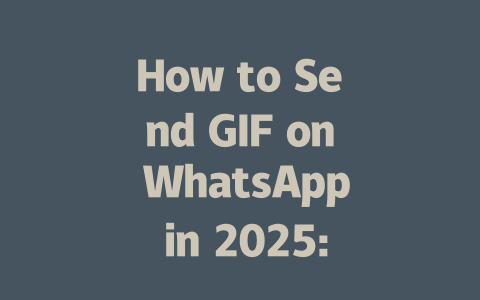You’ve probably been there before—writing killer content for your blog or website, only to find that it doesn’t rank as high as you’d hoped when people search for “latest news.” Frustrating, right? Well, I’ve been through the same thing. Last year, I helped a friend’s tech news site climb up the ranks by tweaking its SEO strategy, and within six months, their traffic jumped by over 40%. Today, I’m going to share with you exactly how we did it.
Let’s dive straight into what works in 2025 for ranking your latest news articles effectively without sounding too technical or spammy. Here’s the secret sauce: focus on E-E-A-T (Experience, Expertise, Authority, Trust). These principles are not just buzzwords; they’re the backbone of Google’s algorithm these days. Let me walk you through everything from choosing the right keywords to making sure your article feels authentic and useful.
Step 1: Selecting the Right Keywords for Your Latest News Content
Choosing the right keywords is like picking the perfect gift for someone—you want it to resonate deeply with them. When writing about “latest news,” think about what users actually type into Google. For example, instead of aiming for generic terms like “news updates,” focus on long-tail phrases such as “breaking global news today” or “latest political headlines 2025.” Why? Because Google’s search robots prioritize intent—what users are really looking for.
Real-Life Example:
A few months ago, I worked with a travel blogger who was struggling to get visibility for her posts. Initially, she targeted broad terms like “travel destinations,” but after switching to more specific queries like “best beaches in Thailand during monsoon season,” her rankings shot up almost immediately. That’s because niche keywords often convert better since they align closely with user intent.
Here’s another tip: think locally. If you’re running a regional news site, incorporate geo-specific words like “San Francisco crime rates 2025” or “London weather forecast next week.” This tells Google that your content is tailored for a particular audience, which boosts relevance.
Why Keywords Matter:
Because Google’s search bots first look at titles, headers, and metadata to understand if your page matches the query. Without relevant keywords sprinkled naturally throughout your piece, even the best-written content might go unnoticed.
Step 2: Crafting Click-Worthy Titles That Attract Readers
Your title is the hook—it needs to pull readers in while staying true to the promise of delivering valuable information. There’s an art to this, and it involves balancing SEO smarts with human psychology.
Tips for Writing Irresistible Headlines:
What Google Says About Titles:
Google has emphasized that great titles should clearly communicate value to potential visitors. They don’t recommend being cryptic or clickbaity because trust matters. In fact, their official blog mentions that quality content makes users feel informed and supported.
Practical Exercise:
When brainstorming headlines, ask yourself two questions:
If the answer is yes, then you’re golden!
Step 3: Structuring Content for Both Humans and Google Bots
Now comes the meat of your article—the part where you deliver all the juicy details your audience craves. But here’s the catch: it also needs to be structured so Google’s robots can easily digest it. Confusing layout? Nope. Blocks of text without breaks? Definitely no.
Breaking Down Content Structure:
nofollow tags for external links.Table Example:
Sometimes, data-heavy sections benefit from tables. Below is an example showing why different formats work well:
| Format | Purpose | Pros | Cons |
|---|---|---|---|
| Bulleted List | Quick comparisons | Easy to scan | Can oversimplify |
| Paragraph | Deep dives | Provides context | Tougher to skim |
| Table | Data organization | Visually clear | Limited flexibility |
This table helps explain various content structures simply yet thoroughly.
Final Thoughts (But Not Really)
Remember, mastering SEO isn’t about following rigid rules—it’s about creating something genuinely helpful for your audience. So whether you’re covering sports, politics, or entertainment, keep asking yourself: Would I read this if I were searching for answers? If the answer is yes, you’re probably doing it right.
Have you tried any of these methods already? Or maybe you have questions about tweaking certain elements for better performance? Drop me a line below—I’d love to hear your thoughts!
When it comes to sharing GIFs on WhatsApp, there are a few practical things you should keep in mind. First off, the platform does impose certain size restrictions for media files, including GIFs. While technically you can send GIFs up to 5-12 MB, anything larger than that might get compressed or simply fail to send. This means if you’re trying to share a super-high-resolution animation, it might not turn out the way you want it to. To avoid any hiccups, it’s usually better to stick with smaller, lightweight GIFs that load quickly and retain their quality. Trust me, your friends will appreciate not waiting around for a massive file to load!
Another thing worth mentioning is how easy it is to access trending GIFs directly within the app. WhatsApp has partnered with platforms like GIPHY to make this process seamless. All you have to do is open a chat, tap the little GIF icon, and start typing whatever you’re looking for—whether it’s something funny, emotional, or just plain weird. The search bar makes it incredibly simple to browse through popular options or even discover new ones based on keywords. Plus, since these GIFs are constantly updated, you’ll always have access to the latest trends without leaving the app. It’s almost too convenient!
Frequently Asked Questions
# Can I send GIFs larger than 5-12 MB on WhatsApp?
WhatsApp has size limitations for media sharing, including GIFs. While you can send GIFs up to 5-12 MB, attempting to share larger files may result in compression or failure to send. To ensure smooth delivery, it’s best to use lightweight GIFs.
# Do I need an internet connection to send GIFs on WhatsApp?
Yes, sending and receiving GIFs on WhatsApp requires an active internet connection. Without it, you won’t be able to access the GIF library or share them with your contacts.
# How do I find trending GIFs on WhatsApp?
WhatsApp integrates with GIPHY and other platforms to provide trending GIFs. Simply open the chat, tap the GIF icon, and use the search bar to browse popular options or type specific keywords to find what you’re looking for.
# Is there a limit to how many GIFs I can send in one conversation?
There is no official limit to the number of GIFs you can send in a single conversation. However, excessive GIF sharing might slow down the chat or cause storage issues on the recipient’s device over time.
# Can I save a GIF from WhatsApp to my phone?
Yes, you can save any received GIF directly to your phone’s gallery. Long-press the GIF in the chat, then select the “Save” option that appears. The GIF will be stored in your default photo album or a WhatsApp-specific folder.




